Duelund Resistor Upgrade For The SDA SRS 1.2TL

DarqueKnight
Posts: 6,765
Introduction
After all the raving about Duelund resistors, on this forum and elsewhere, I decided to give them a try in my SDA SRS 1.2TL loudspeakers. I ordered ten CAST Silver resistors, with 10 watt rating and longer leads, directly from Duelund. The longer leads cost $6.70 per resistor. The total cost, inclusive of shipping from Brandby, Denmark, was $650, or $65 per resistor. I placed the order on 2/14/13 and received the merchandise on 3/25/13. I was initially quoted a delivery time of 3 weeks, but the factory had to attend to some other unforeseen issues before my order could be processed. When Duelund was able to process my order, they were nice enough to ship it by FedEx International Priority Service.
The long length of the Duelunds (5.3") usually presents placement problems. Over two years ago, I replaced the stock crossover circuit board with a custom 4" x 12" board (discussed here). I was able to get all five resistors to fit on the underside of the board. I could have ordered the shorter, 3" long version, but the shorter resistors have 5 watt power ratings. Furthermore, Duelund said there was a small improvement in sound quality with the longer 10 watt version.
Duelund Drama
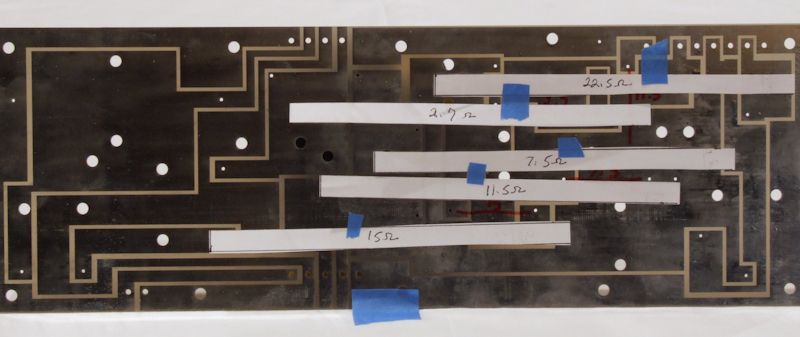
Figure 1. Duelund resistor placement mockup.
Paper cutouts with the same footprint as the Duelund CAST resistors were arranged on the back of a prototype sample of my SDA SRS 1.2TL crossover board. I ordered long leads and asked how long the "long leads" were. This is the response I received from Duelund:
"They are made so they easily cross each other on the middle of the resistor. I make them by hand, so I just make them looong."
Based on that vague, non-quantitative reply, and knowing that the resistors were 5.3" long, I guessed that the leads would be at least 4" long. The actual leads measured 4.2" to 5.1" long and are spaced 4.8" apart
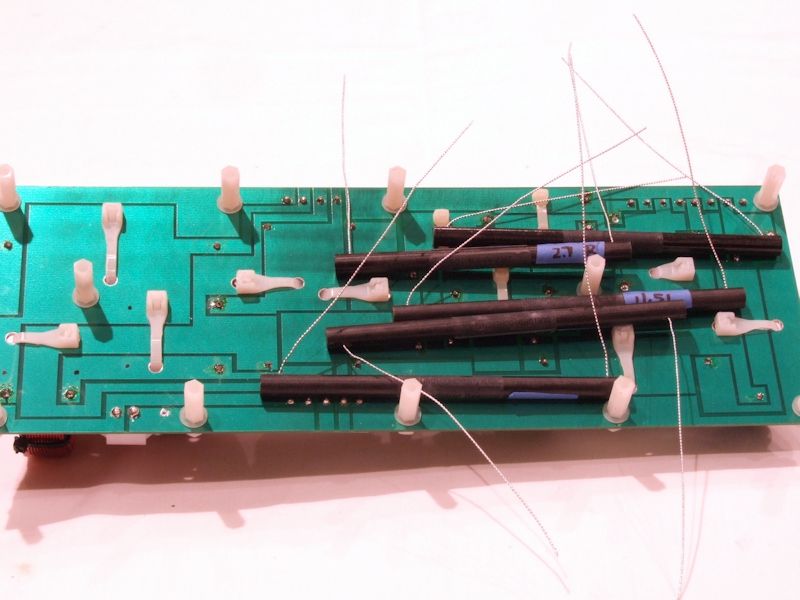
Figure 2. Actual resistor arrangement.
Due to the locations of the resistor through-holes and obstructions on the back of the board, the 11.5 ohm resistor had to be stacked on top of the 2.7 ohm resistor.
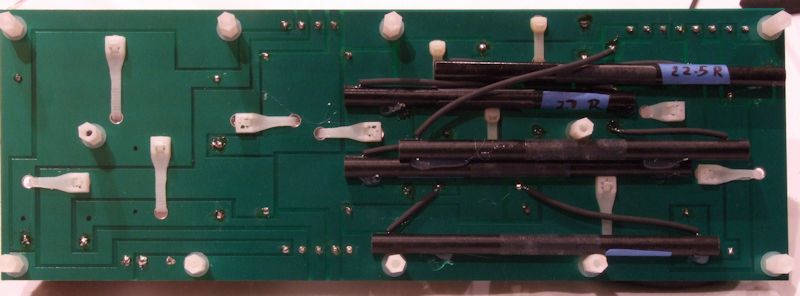
Figure 3. What a mess - Duelund resistors installed. The leads are covered with 3/16" shrink wrap.
The resistors were secured to the board with a pad of hot glue at each end.
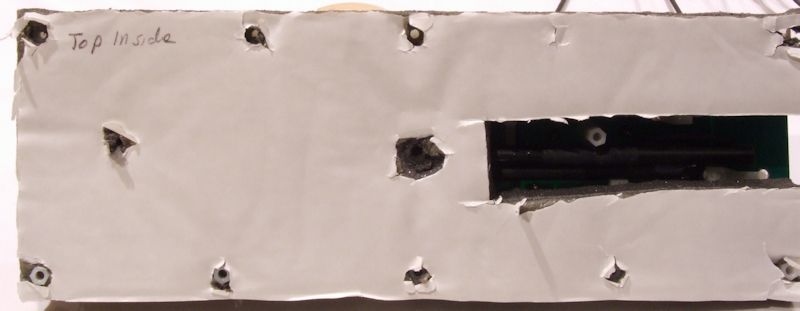
Figure 4. Cutout in the Sonic Barrier Black Hole damping material.
Sonic Barrier Black Hole damping material is placed between the circuit board and its same-size structural support board. I cut away the damping material in the area of the stacked resistors to avoid excess pressure on them. I found out the hard way that Duelund resistors are somewhat delicate.
Quantitative Analysis
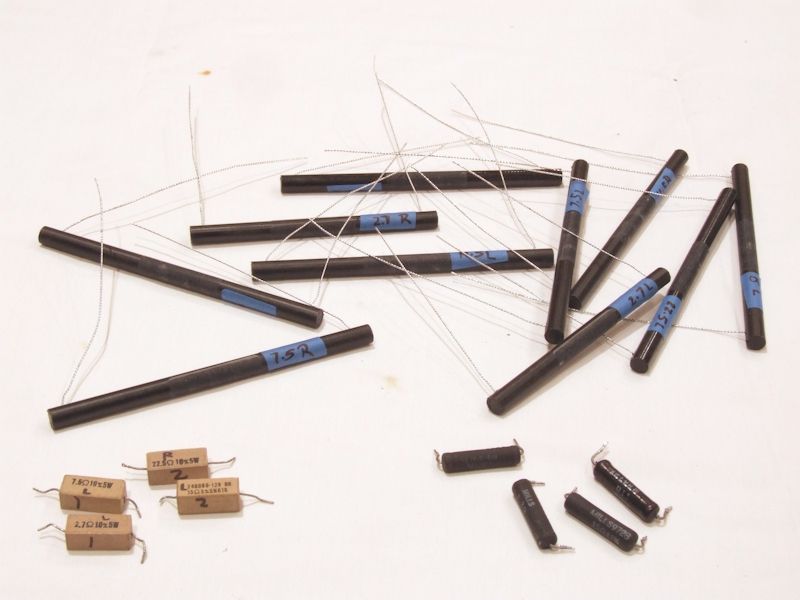
Figure 5. Licorice sticks, bricks and regular looking resistors. Clockwise from bottom left: original ceramic
metallic resistors, Duelund carbon resistors, Mills MRA-12 wire wound resistors.
The blue painter's tape labels shown in figure 5 were required because the resistor labels were black type printed on transparent adhesive. Since the resistor body is black, the label lettering was difficult to read closeup and impossible to read more than a foot away. I have 20/20 uncorrected vision.

Noise spectrum measurements with an oscilloscope showed that the Mills passed a cleaner signal than the cermet resistors and the Duelunds passed a cleaner signal than the Mills. The increase in transparency was immediately apparent, but it was more modest than I expected. The noise spectrum of a 1000 Hz test signal from an MCP BR2822 LCR meter was analyzed after it passed through no resistor (only the leads of the meter and oscilloscope) and then through 2.7 ohm and 22.5 ohm ceramic metallic (original SDA resistors), Mills MRA-12 and Duelund CAST Silver resistors. The Fast Fourier Transform noise spectrum plots are from a Tektronix TDS 2012 oscilloscope. All FFT measurements were taken within a few minutes of each other.
It is easier to see differences in the plots if you save them and view them in succession.
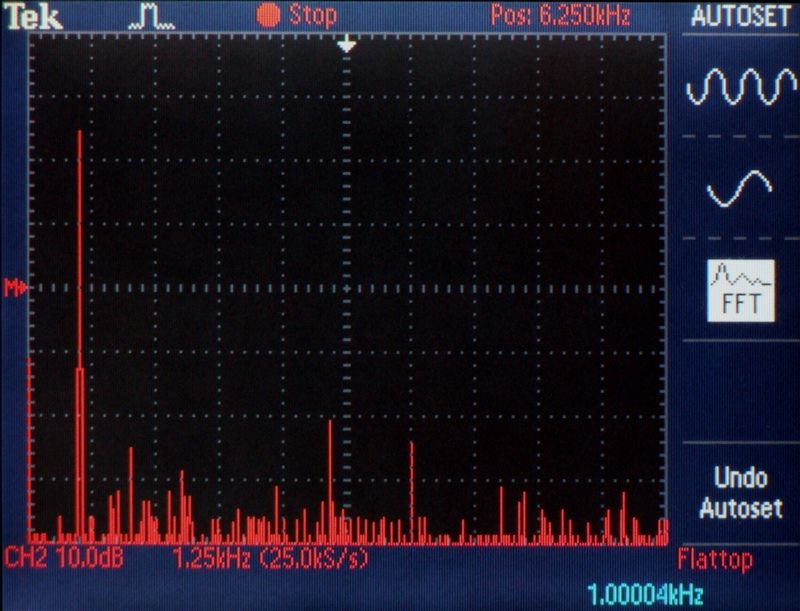
Figure 6. 1000 Hz test signal straight in from LCR meter.

Figure 7. FFT plot of 1000 Hz test signal from 2.7 ohm ceramic metallic resistor.

Figure 8. FFT plot of 1000 Hz test signal from 2.7 ohm Mills MRA-12 resistor.
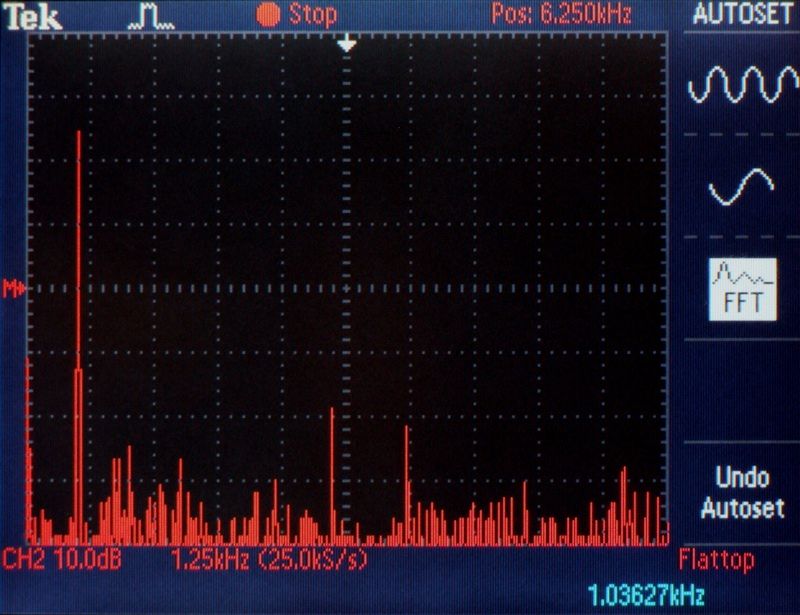
Figure 9. FFT plot of 1000 Hz test signal from 2.7 ohm Duelund CAST Silver resistor.

Figure 10. FFT plot of 1000 Hz test signal from 22.5 ohm ceramic metallic resistor.
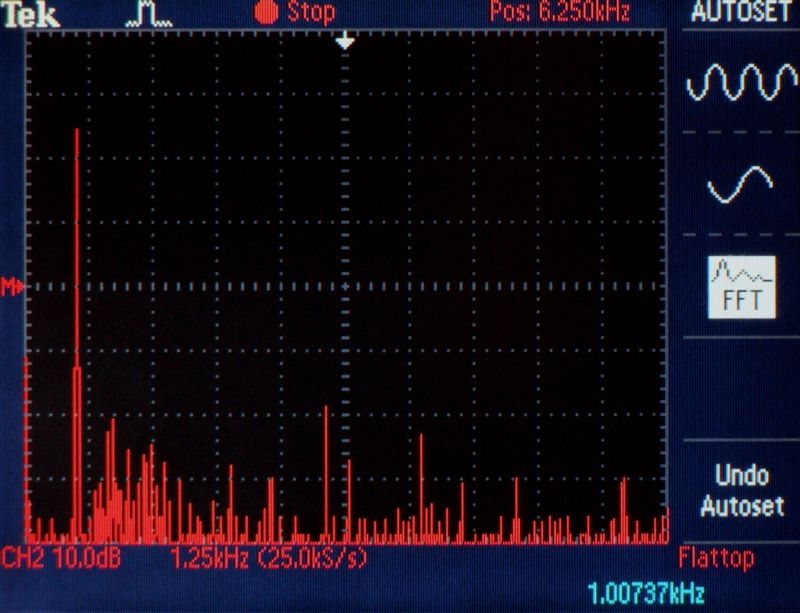
Figure 11. FFT plot of 1000 Hz test signal from 22.5 ohm Mills MRA-12 resistor.
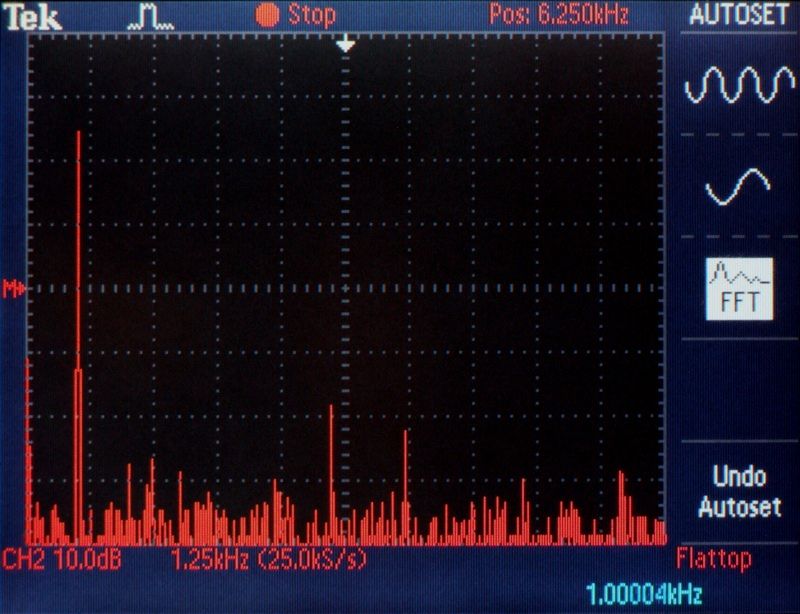
Figure 12. FFT plot of 1000 Hz test signal from 22.5 ohm Duelund CAST Silver resistor.
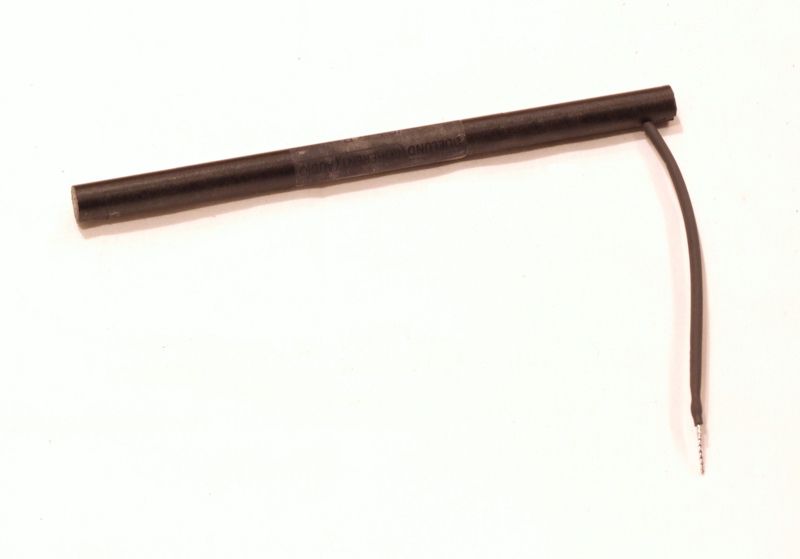
Figure 13. One lead of one of the 11.5 ohm resistors broke off with normal handling during installation. I
soldered it back on. Duelund is sending a replacement.
In all my years and years as an electronics hobbyist since teenage, I have never had a component lead to break...until now...with my $65 a piece boutique resistors.
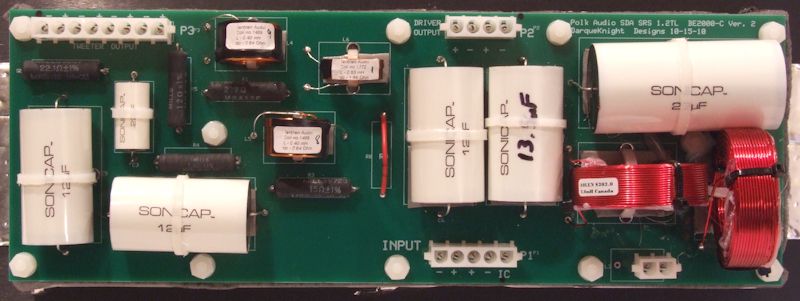
Figure 14. SDA SRS 1.2TL crossover board with Mills MRA-12 resistors.
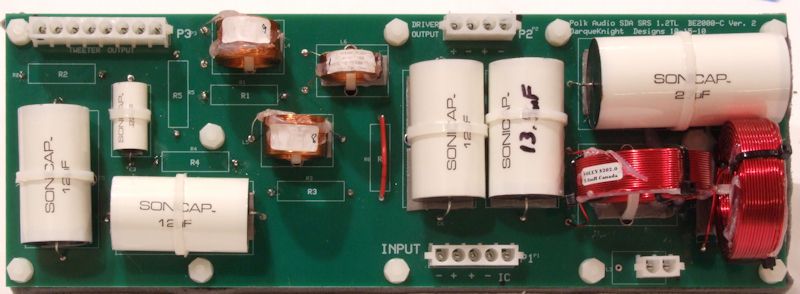
Figure 15. SDA SRS 1.2TL crossover board with Duelund CAST Silver resistors on the back.
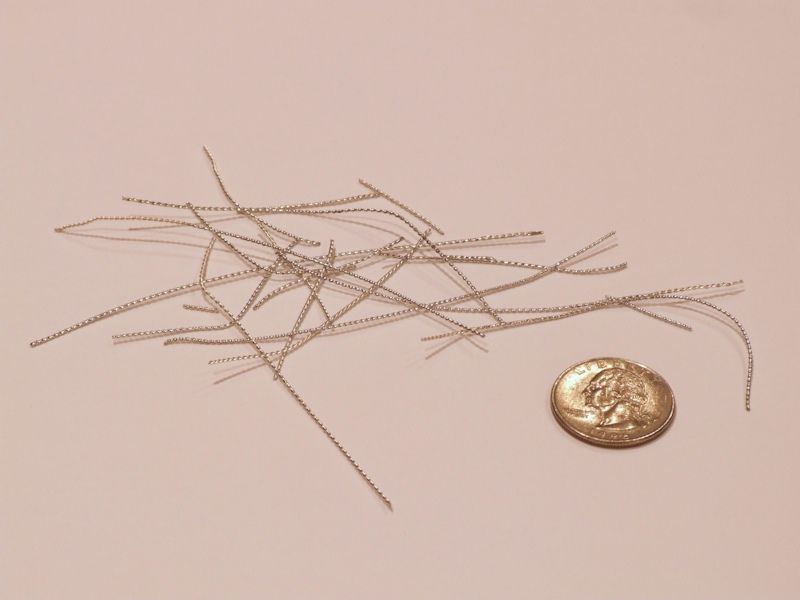
Figure 16. Leftover tinned silver wire from clipped resistor leads. Maybe I'll melt it down and make a piece
of jewelry.
Listening Evaluation
I received this reply when I asked Duelund about break in time for the CAST Silver resistors:
"5 days good playing."
Since I didn't know what a day of good playing was, I assumed it to be a typical day's listening, say 10 hours, rather than an entire 24 hour day. That would generously put "5 days good playing" as 50 hours. I let the radio play overnight and while away from home. I did not notice any changes while casually listening nor while reviewing my listening notes and spatial placement charts. After 66 hours of straight playing time, I sat down for a critical listening session. Again, I didn't hear any improvement over the initial critical listening session which was done 24 hours after installation. I primarily listen to instrumental jazz. I might have heard some difference after longer break in time if I had played a wider variety of vocal music.
Conclusion
I found the Duelunds to be a little more transparent than the Mills MRA's, although I paid a hefty premium for that added transparency. I would feel better about the financial investment if the degree of improvement had been on the order of that realized with the premium grade Sonicap capacitors and Solen and Jantzen inductors previously adopted. In addition, the quality issues I encountered with broken and loose leads were not confidence inspiring. I would have to think long and hard about using these in a future project.
Associated Equipment
Pass Labs X0.2 preamplifier
Pass Labs XP-25 phono preamplifier
Parasound Halo JC 1 monoblock power amplifiers (800 watts continuous into 4 ohms)
Cary Audio CD 306 Pro Version SACD player
Teres Audio No. 255 turntable with Ortofon MC Windfeld cartridge and Graham Phantom tonearm
AudioQuest Sky XLR interconnects
AudioQuest Everest speaker cables
Polk Audio SDA SRS 1.2TL loudspeakers (extensively modified, 4 ohms nominal impedance)
PS Audio P10 AC Regenerator
After all the raving about Duelund resistors, on this forum and elsewhere, I decided to give them a try in my SDA SRS 1.2TL loudspeakers. I ordered ten CAST Silver resistors, with 10 watt rating and longer leads, directly from Duelund. The longer leads cost $6.70 per resistor. The total cost, inclusive of shipping from Brandby, Denmark, was $650, or $65 per resistor. I placed the order on 2/14/13 and received the merchandise on 3/25/13. I was initially quoted a delivery time of 3 weeks, but the factory had to attend to some other unforeseen issues before my order could be processed. When Duelund was able to process my order, they were nice enough to ship it by FedEx International Priority Service.
The long length of the Duelunds (5.3") usually presents placement problems. Over two years ago, I replaced the stock crossover circuit board with a custom 4" x 12" board (discussed here). I was able to get all five resistors to fit on the underside of the board. I could have ordered the shorter, 3" long version, but the shorter resistors have 5 watt power ratings. Furthermore, Duelund said there was a small improvement in sound quality with the longer 10 watt version.
Duelund Drama

Figure 1. Duelund resistor placement mockup.
Paper cutouts with the same footprint as the Duelund CAST resistors were arranged on the back of a prototype sample of my SDA SRS 1.2TL crossover board. I ordered long leads and asked how long the "long leads" were. This is the response I received from Duelund:
"They are made so they easily cross each other on the middle of the resistor. I make them by hand, so I just make them looong."
Based on that vague, non-quantitative reply, and knowing that the resistors were 5.3" long, I guessed that the leads would be at least 4" long. The actual leads measured 4.2" to 5.1" long and are spaced 4.8" apart

Figure 2. Actual resistor arrangement.
Due to the locations of the resistor through-holes and obstructions on the back of the board, the 11.5 ohm resistor had to be stacked on top of the 2.7 ohm resistor.

Figure 3. What a mess - Duelund resistors installed. The leads are covered with 3/16" shrink wrap.
The resistors were secured to the board with a pad of hot glue at each end.

Figure 4. Cutout in the Sonic Barrier Black Hole damping material.
Sonic Barrier Black Hole damping material is placed between the circuit board and its same-size structural support board. I cut away the damping material in the area of the stacked resistors to avoid excess pressure on them. I found out the hard way that Duelund resistors are somewhat delicate.
Quantitative Analysis

Figure 5. Licorice sticks, bricks and regular looking resistors. Clockwise from bottom left: original ceramic
metallic resistors, Duelund carbon resistors, Mills MRA-12 wire wound resistors.
The blue painter's tape labels shown in figure 5 were required because the resistor labels were black type printed on transparent adhesive. Since the resistor body is black, the label lettering was difficult to read closeup and impossible to read more than a foot away. I have 20/20 uncorrected vision.

Noise spectrum measurements with an oscilloscope showed that the Mills passed a cleaner signal than the cermet resistors and the Duelunds passed a cleaner signal than the Mills. The increase in transparency was immediately apparent, but it was more modest than I expected. The noise spectrum of a 1000 Hz test signal from an MCP BR2822 LCR meter was analyzed after it passed through no resistor (only the leads of the meter and oscilloscope) and then through 2.7 ohm and 22.5 ohm ceramic metallic (original SDA resistors), Mills MRA-12 and Duelund CAST Silver resistors. The Fast Fourier Transform noise spectrum plots are from a Tektronix TDS 2012 oscilloscope. All FFT measurements were taken within a few minutes of each other.
It is easier to see differences in the plots if you save them and view them in succession.

Figure 6. 1000 Hz test signal straight in from LCR meter.

Figure 7. FFT plot of 1000 Hz test signal from 2.7 ohm ceramic metallic resistor.

Figure 8. FFT plot of 1000 Hz test signal from 2.7 ohm Mills MRA-12 resistor.

Figure 9. FFT plot of 1000 Hz test signal from 2.7 ohm Duelund CAST Silver resistor.

Figure 10. FFT plot of 1000 Hz test signal from 22.5 ohm ceramic metallic resistor.

Figure 11. FFT plot of 1000 Hz test signal from 22.5 ohm Mills MRA-12 resistor.

Figure 12. FFT plot of 1000 Hz test signal from 22.5 ohm Duelund CAST Silver resistor.

Figure 13. One lead of one of the 11.5 ohm resistors broke off with normal handling during installation. I
soldered it back on. Duelund is sending a replacement.
In all my years and years as an electronics hobbyist since teenage, I have never had a component lead to break...until now...with my $65 a piece boutique resistors.

Figure 14. SDA SRS 1.2TL crossover board with Mills MRA-12 resistors.

Figure 15. SDA SRS 1.2TL crossover board with Duelund CAST Silver resistors on the back.

Figure 16. Leftover tinned silver wire from clipped resistor leads. Maybe I'll melt it down and make a piece
of jewelry.
Listening Evaluation
I received this reply when I asked Duelund about break in time for the CAST Silver resistors:
"5 days good playing."
Since I didn't know what a day of good playing was, I assumed it to be a typical day's listening, say 10 hours, rather than an entire 24 hour day. That would generously put "5 days good playing" as 50 hours. I let the radio play overnight and while away from home. I did not notice any changes while casually listening nor while reviewing my listening notes and spatial placement charts. After 66 hours of straight playing time, I sat down for a critical listening session. Again, I didn't hear any improvement over the initial critical listening session which was done 24 hours after installation. I primarily listen to instrumental jazz. I might have heard some difference after longer break in time if I had played a wider variety of vocal music.
Conclusion
I found the Duelunds to be a little more transparent than the Mills MRA's, although I paid a hefty premium for that added transparency. I would feel better about the financial investment if the degree of improvement had been on the order of that realized with the premium grade Sonicap capacitors and Solen and Jantzen inductors previously adopted. In addition, the quality issues I encountered with broken and loose leads were not confidence inspiring. I would have to think long and hard about using these in a future project.
Associated Equipment
Pass Labs X0.2 preamplifier
Pass Labs XP-25 phono preamplifier
Parasound Halo JC 1 monoblock power amplifiers (800 watts continuous into 4 ohms)
Cary Audio CD 306 Pro Version SACD player
Teres Audio No. 255 turntable with Ortofon MC Windfeld cartridge and Graham Phantom tonearm
AudioQuest Sky XLR interconnects
AudioQuest Everest speaker cables
Polk Audio SDA SRS 1.2TL loudspeakers (extensively modified, 4 ohms nominal impedance)
PS Audio P10 AC Regenerator
Proud and loyal citizen of the Digital Domain and Solid State Country!
Post edited by DarqueKnight on
Comments
-
Sorry Ray that things went sour for you regarding Duelund resistors. I thought you yould be loving these things.:sad: I would at least save this leads for jumpers in future projects.:cool:

Taken from a recent Audioholics reply regarding "Club Polk" and Polk speakers:
"I'm yet to hear a Polk speaker that merits more than a sentence and 60 seconds discussion."
My response is: If you need 60 seconds to respond in one sentence, you probably should't be evaluating Polk speakers.....
"Green leaves reveal the heart spoken Khatru"- Jon Anderson
"Have A Little Faith! And Everything You'll Face, Will Jump From Out Right On Into Place! Yeah! Take A Little Time! And Everything You'll Find, Will Move From Gloom Right On Into Shine!"- Arthur Lee -
Sorry Ray that things went sour for you regarding Duelund resistors. I thought you yould be loving these things.:sad:
I can't say that things went sour because I did receive a sonic benefit and my speakers do sound better to me with the Duelunds than with the Mills. They just weren't as big of an improvement as other crossover component upgrades.
To put this in perspective, when I went from the original ceramic metallic resisters to the Mills, there was no way I would ever go back to the cermet resistors. I eagerly replaced all the resistors in all my SDA's with Mills. With capacitors, I went from stock mylar and electrolytics to AudioCaps to Sonicaps. I then put Sonicaps in all my SDA's and I would never go back to AudioCaps. When I went from stock inductors to Solen and Jantzen perfect lay inductors in my 1.2TL's, I liked them so much that I replaced all the inductors in all of my SDA's with Solen and Jantzen inductors. I could never imagine going back to the stock inductors.
In the above cases, the upgrade part made me completely lose interest in the previous part. In contrast, the Duelunds did not make me lose interest in the Mills. I have no desire to replace all of the Mills resistors in my other four pairs of SDA's with Duelunds, even though I can well afford it. I would still use Mills without hesitation in future projects. I might use Duelunds again if I had a project where it was important to get that last little bit of elusive transparency.I would at least save this leads for jumpers in future projects.:cool:
I'm thinking of melting them down and making a dollar sign pendant.:cool:Proud and loyal citizen of the Digital Domain and Solid State Country! -
I'll stick with Mills, thank you very much.Political Correctness'.........defined
"A doctrine fostered by a delusional, illogical minority and rabidly promoted by an unscrupulous mainstream media, which holds forth the proposition that it is entirely possible to pick up a t-u-r-d by the clean end."
President of Club Polk -
I'll stick with Mills, thank you very much.
C'mon....you only live once and you can't take it with you.Proud and loyal citizen of the Digital Domain and Solid State Country! -
Vampires tend to live for a very long time.
 Political Correctness'.........defined
Political Correctness'.........defined
"A doctrine fostered by a delusional, illogical minority and rabidly promoted by an unscrupulous mainstream media, which holds forth the proposition that it is entirely possible to pick up a t-u-r-d by the clean end."
President of Club Polk -
It boggles the mind to think what compound interest must be doing for someone with your life span.Proud and loyal citizen of the Digital Domain and Solid State Country!
-
DarqueKnight wrote: »C'mon....you only live once and you can't take it with you.
The way I look at it is: If I had to change the resistors/capacitors every 2 years, i would be much more reluctant to use the Clarity Cap/Duelund combo, but being as it's every 20 years, IMO it's definately worth it.
Edit: (Although taking into account what Jesse said in his last reply, I could see his reluctance) :cheesygrin:
Taken from a recent Audioholics reply regarding "Club Polk" and Polk speakers:
"I'm yet to hear a Polk speaker that merits more than a sentence and 60 seconds discussion."
My response is: If you need 60 seconds to respond in one sentence, you probably should't be evaluating Polk speakers.....
"Green leaves reveal the heart spoken Khatru"- Jon Anderson
"Have A Little Faith! And Everything You'll Face, Will Jump From Out Right On Into Place! Yeah! Take A Little Time! And Everything You'll Find, Will Move From Gloom Right On Into Shine!"- Arthur Lee -
+1...Sorry Ray that things went sour for you regarding Duelund resistors. I thought you yould be loving these things.:sad:"He who fights with monsters should look to it that he himself does not become a monster. And when you gaze long into an abyss the abyss also gazes into you." Friedrich Nietzsche -
Nice project, excellent write up and thank you all.Main Family Room: Sony 46 LCD, Sony Blue Ray, Sony DVD/VCR combo,Onkyo TXNR 708, Parasound 5250,
Polk SDS-SRS with mods, CSI 5 center + Klipsch SC2, Polk RT2000P rears, Klipsch KG 1.5's sides, Polk Micro Pro 1000, Polk Micro Pro 2000, Polk SW505, Belkin PF60, Signal Cable Classics,Monster IC's, 2 15 amp circuits & 1 20 amp circuit.
Living Room: Belkin PF60, Parasound HCA2200, MIT ProlineEXP balanced IC's,Emotiva XDA-1 DAC/Pre,Emotiva ERC2 transport,MIT AVT2, Polk LSI 9's. -
-
Thanks for the write-up Ray, and sorry that you're not doing cartwheels over the improvement.
I used Duelands in my 4.1TL's, but as you know mine is a much simpler crossover with fewer resistors, so the financial impact was not as severe as in your case. Also, I did a complete rebuild of the CRS+'s in one go, starting out with the Duelands. I never went from Mills to Duelands as an isolated tweak, so I don't have a basis for making the comparison that you have done. My evaluation of them is not "pure" in that I listen to them in a pair of speakers that I never had operating in stock form, and I rebuilt with Sonicaps, and Jantzen/Solen inductors in addition to the Dueland resistors all in one go. I can only say that the combination of all of the new parts into the new circuit sounds fantastic, so I haven't walked away from the project feeling any regrets.
High end audio is one of these hobbies where you reach a certain level at which modest improvements come with a high price tag. If you were to use an arbitrary sound quality scale of 1-10 as an example, I think you would find over and over that you can go from a sound quality level of 4, for example, to a level of 7 for a modest cost. But then to go from 7 to 8 the cost can be far from modest, and whether or not the move from 7 to 8 is worth the price is always a personal decision. You've found that the Duelands do sound somewhat better than Mills (and that observation is supported by your measurements), but given the price difference and the quantities that you need for your crossovers, it sounds like you've found one of these instances where the improvement may not be justified by the cost.
As for the one you had where the lead broke off, I think this was just a one-off anomaly. Given that they are made by hand, I'm sure build issues can arise here and there. I had no such problem with my Duelands. I was also able to lay them out very easily on Tony's boards, albeit with some alternative layout instructions from Tony. No bottom mounting or stacking was required.
I can also say without hesitation that I have done other crossover rebuilds in other speakers using Mills, and have been extremely pleased with the results.
For me, the decision to go with the Duelands was simply a desire to go "all out" with my 4.1TL's. Given how much I was spending for all the other parts and materials, the difference in price was marginal (since I only need a total of four of them) so I decided to go for it. But if I were to inherit a pair of speakers where the crossovers had already been rebuilt with Mills, would I pull them apart just to put Duelands in? Probably not.
As always, thanks for your great reviews and all of the detailed analysis that goes into them!Good music, a good source, and good power can make SDA's sing. Tubes make them dance. -
As for the one you had where the lead broke off, I think this was just a one-off anomaly. Given that they are made by hand, I'm sure build issues can arise here and there.
But since they are made by hand, and since they charge a premium due to hand assembly, I would expect something like this not to slip by.I was also able to lay them out very easily on Tony's boards, albeit with some alternative layout instructions from Tony. No bottom mounting or stacking was required.
The bottom mounting offered a flat surface with more mechanical stability. I could have avoided stacking the 7.5 and 11.5 ohm resistors if I had used lead extensions and moved the 11.5 ohm resistor further away. I am leaning toward doing this.Proud and loyal citizen of the Digital Domain and Solid State Country! -
Since we are talking improvements with money not a real problem here.
Ray have you or anyone else looked at changing the MW drivers for something of a better quality.
Anyone experimented with different, more expensive drivers? We all concur the newer tweeters were
better than the originals. Let's say new MW drivers in the $150-$200 each range?POLK SDA 2.3 TLS BOUGHT NEW IN 1990, Gimpod/Sonic Caps/Mills RDO-198
POLK CSI-A6 POLK MONITOR 70'S ONKYO TX NR-808 SONY CDP-333ES
PIONEER PL-510A SONY BDP S5100
POLK SDA 1C BOUGHT USED 2011,Gimpod/Sonic Caps/Mills RDO-194
ONKYO HT RC-360 SONY BDP S590 TECHNICS SL BD-1 -
It would be difficult to find something that would be an improvement, but would have similar enough T&S specifications that would allow reuse of the cabinet/passive radiator.
Under $100, these would probably be best: http://www.madisoundspeakerstore.com/sb-acoustics-woofers-6-7/sb-acoustics-sb17mfc35-8-6-poly-cone-woofer/ and http://www.madisoundspeakerstore.com/approx-6-7-woofers-sb-acoustics/sb-acoustics-sb17mfc35-4-6-poly-cone-woofer/
In the $150-200 price range things get complex. Most drivers there may have lower distortion, but most don't have a smooth roll off like Polk's MW drivers. Besides the T&S issues, the issue of being available in both 4 and 8ohm makes things even more difficult. ScanSpeak has a few nice woofers available in both 4 and 8ohms, but are even more expensive and a little more difficult to work with."He who fights with monsters should look to it that he himself does not become a monster. And when you gaze long into an abyss the abyss also gazes into you." Friedrich Nietzsche -
So you have been looking a little. Those look pretty good. Now if I could find some old cabinets (Goodwill) to play around with.It would be difficult to find something that would be an improvement, but would have similar enough T&S specifications that would allow reuse of the cabinet/passive radiator.
Under $100, these would probably be best: http://www.madisoundspeakerstore.com/sb-acoustics-woofers-6-7/sb-acoustics-sb17mfc35-8-6-poly-cone-woofer/ and http://www.madisoundspeakerstore.com/approx-6-7-woofers-sb-acoustics/sb-acoustics-sb17mfc35-4-6-poly-cone-woofer/
In the $150-200 price range things get complex. Most drivers there may have lower distortion, but most don't have a smooth roll off like Polk's MW drivers. Besides the T&S issues, the issue of being available in both 4 and 8ohm makes things even more difficult. ScanSpeak has a few nice woofers available in both 4 and 8ohms, but are even more expensive and a little more difficult to work with.POLK SDA 2.3 TLS BOUGHT NEW IN 1990, Gimpod/Sonic Caps/Mills RDO-198
POLK CSI-A6 POLK MONITOR 70'S ONKYO TX NR-808 SONY CDP-333ES
PIONEER PL-510A SONY BDP S5100
POLK SDA 1C BOUGHT USED 2011,Gimpod/Sonic Caps/Mills RDO-194
ONKYO HT RC-360 SONY BDP S590 TECHNICS SL BD-1 -
There are plenty of "better":surprised: drivers but none likely to be drop in replacements,thus requiring a complete reworking of the crossover.... changing the MW drivers for something of a better quality. -
Yea I would not mess with my vintage sets. I would try going from the empty cabs up, a all new Sda as far as electronic components.There are plenty of "better":surprised: drivers but none likely to be drop in replacements,thus requiring a complete reworking of the crossover.POLK SDA 2.3 TLS BOUGHT NEW IN 1990, Gimpod/Sonic Caps/Mills RDO-198
POLK CSI-A6 POLK MONITOR 70'S ONKYO TX NR-808 SONY CDP-333ES
PIONEER PL-510A SONY BDP S5100
POLK SDA 1C BOUGHT USED 2011,Gimpod/Sonic Caps/Mills RDO-194
ONKYO HT RC-360 SONY BDP S590 TECHNICS SL BD-1 -
Since we are talking improvements with money not a real problem here. Ray have you or anyone else looked at changing the MW drivers for something of a better quality?
I have. See my and Face's comments below.It would be difficult to find something that would be an improvement, but would have similar enough T&S specifications that would allow reuse of the cabinet/passive radiator.
Polk's engineering department told me some years ago that it would be close to impossible to find higher quality drop-in replacements. They said they would have to have drivers built to spec...and even then crossover tweaking would be necessary.Proud and loyal citizen of the Digital Domain and Solid State Country! -
It would be awesome to pull off though.. It just wouldn't be worth the time and effort in R&D.
I wonder if one would be better off looking at building them without the passives..
Still looks like it would be a waste of time.. -
Or a modified 3way design.Since the SDA signal in later SDA's is restricted mainly to the mid band one could try adding a second midrange adjacent to the main mid of a pair of 3ways for the difference signal.With some tweeking of their(the extra mids) level and positioning for proper delay might get you a reasonable facsimile.For curiousity I plan on dabbling with such an experiment soon.I wonder if one would be better off looking at building them without the passives..
.. -
I will be watching you
 Or a modified 3way design.Since the SDA signal in later SDA's is restricted mainly to the mid band one could try adding a second midrange adjacent to the main mid of a pair of 3ways for the difference signal.With some tweeking of their(the extra mids) level and positioning for proper delay might get you a reasonable facsimile.For curiousity I plan on dabbling with such an experiment soon.POLK SDA 2.3 TLS BOUGHT NEW IN 1990, Gimpod/Sonic Caps/Mills RDO-198
Or a modified 3way design.Since the SDA signal in later SDA's is restricted mainly to the mid band one could try adding a second midrange adjacent to the main mid of a pair of 3ways for the difference signal.With some tweeking of their(the extra mids) level and positioning for proper delay might get you a reasonable facsimile.For curiousity I plan on dabbling with such an experiment soon.POLK SDA 2.3 TLS BOUGHT NEW IN 1990, Gimpod/Sonic Caps/Mills RDO-198
POLK CSI-A6 POLK MONITOR 70'S ONKYO TX NR-808 SONY CDP-333ES
PIONEER PL-510A SONY BDP S5100
POLK SDA 1C BOUGHT USED 2011,Gimpod/Sonic Caps/Mills RDO-194
ONKYO HT RC-360 SONY BDP S590 TECHNICS SL BD-1 -
Well then I can relax knowing that at least the drivers can't be improved on enough to spend time or money experimenting.DarqueKnight wrote: »I have. See my and Face's comments below.
Polk's engineering department told me some years ago that it would be close to impossible to find higher quality drop-in replacements. They said they would have to have drivers built to spec...and even then crossover tweaking would be necessary.POLK SDA 2.3 TLS BOUGHT NEW IN 1990, Gimpod/Sonic Caps/Mills RDO-198
POLK CSI-A6 POLK MONITOR 70'S ONKYO TX NR-808 SONY CDP-333ES
PIONEER PL-510A SONY BDP S5100
POLK SDA 1C BOUGHT USED 2011,Gimpod/Sonic Caps/Mills RDO-194
ONKYO HT RC-360 SONY BDP S590 TECHNICS SL BD-1 -
Well one day if you want SDA's we will have to figure out some way to make some. I am holding mine hopefully till I can't hear or am gone. Because nothing else does it for me.It would be awesome to pull off though.. It just wouldn't be worth the time and effort in R&D.
I wonder if one would be better off looking at building them without the passives..
Still looks like it would be a waste of time..POLK SDA 2.3 TLS BOUGHT NEW IN 1990, Gimpod/Sonic Caps/Mills RDO-198
POLK CSI-A6 POLK MONITOR 70'S ONKYO TX NR-808 SONY CDP-333ES
PIONEER PL-510A SONY BDP S5100
POLK SDA 1C BOUGHT USED 2011,Gimpod/Sonic Caps/Mills RDO-194
ONKYO HT RC-360 SONY BDP S590 TECHNICS SL BD-1





